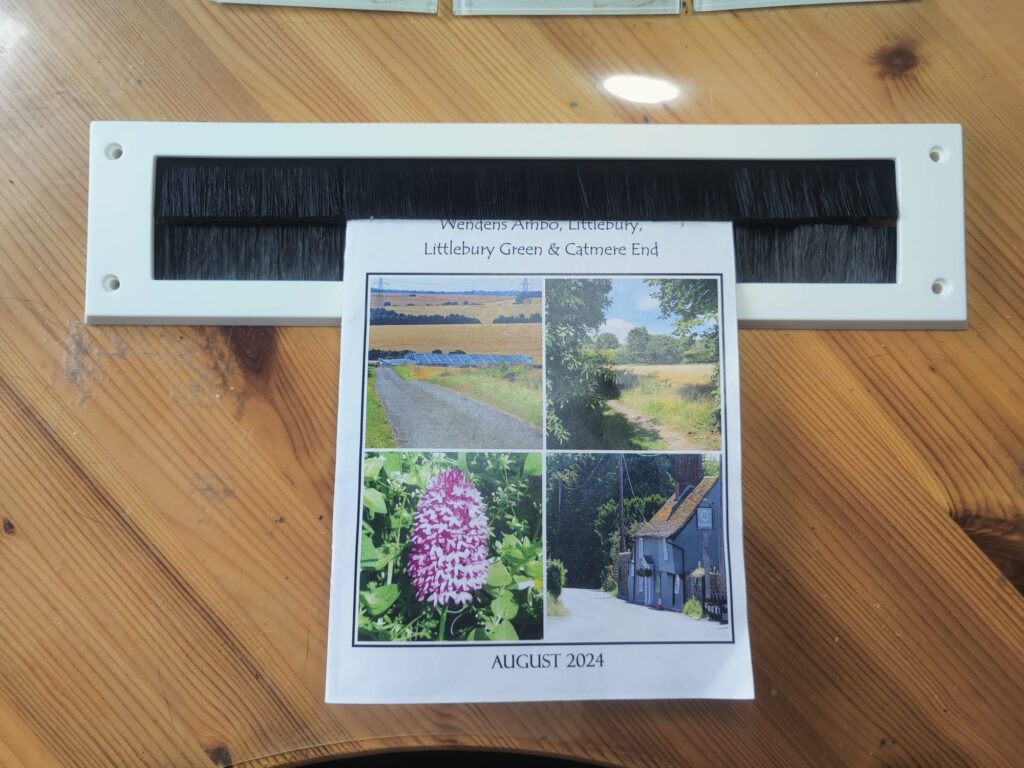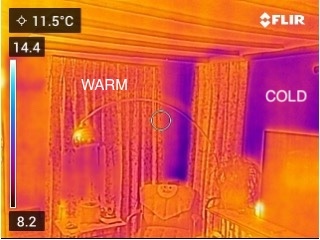With Autumn upon us and the cold weather of winter soon to return, we look at relatively easy, more affordable steps that can help to keep houses warm and save you money at the same time. Below that we also list some approaches to saving money on heating while still being comfortable.
Quick Fixes to Create a Warmer Home
- Letterboxes and key-holes are a common source of draughts. It is possible to install flaps and simple draught excluders to both to reduce draughts. Installing an internal letterbox flap with brushes greatly reduces the cold air or a magnetic letterbox draught excluder will seal completely. Old draughty windows can be improved by sealing gaps with silicone sealant.
- Heat can be lost through gaps around loft hatches which can be sealed or improved with draught excluder tape. If the loft hatch is uninsulated, consider attaching an insulation block to the hatch.
- Look for gaps at the edges of floorboards including under carpets and draught proof these.
- Borrow a thermal camera from the Littlebury Energy Project to help identify cold spots (see details below).
- Thick curtains can help reduce heat loss through windows and doors. Consider also adding lining to the curtains to help further or even using thermal lined curtain material. Ideally the curtains should go to the floor unless this covers a radiator.
- Windows can be further insulated by using “French” curtain poles which enclose the window to reduce heat loss (see last month’s village views article).
- Installing a curtain in front of a front door using a “riser” system will reduce heat loss, especially if the door is draughty or opens directly into the main living area.


- For efficiency, close curtains as soon as it begins to get dark and temperatures drop.
- If you have a hallway or lobby area with a door, keep the inner door shut, especially before opening the front door in cold weather, a bit like an air lock on a spaceship!
- Fitting thermostatic radiator valves enables you to control the temperature room by room. For instance, you might want to have the bedroom areas cooler than the living areas for sleeping.
- Secondary double glazing will reduce heat loss through windows. As well as more permanent professional solutions, temporary ‘Plastic Film’ window glazing kits or magnetic secondary glazing can be installed as a DIY project for single glazed windows. See https://www.greenmatch.co.uk/blog/window-insulation-film.
- If you aren’t using your chimney, consider blocking it off to reduce heat loss at either the top or bottom, but never both.
- The LEP has some draught proofing items available by request.

If you seal and insulate your house, it’s also important to ensure moisture doesn’t accumulate, to avoid damp. In cold weather, opening windows to create a through draught for 10-15 minutes once a day will remove moist air without allowing the fabric of the building to cool significantly. Other advice on damp prevention include :
- Increase ventilation: Open windows and vents when possible, especially when cooking or washing up.
- Use extractor fans: Use an extractor fan or open a bathroom window for about 20 minutes after showering or bathing.
- Keep rooms warm: Use energy efficient, low emissions heating to heat rooms being used by someone to at least 18°C.
- Reduce clutter: Leave space for air to circulate between walls and furniture.
- Use a dehumidifier: Use a dehumidifier if possible.
- Wipe condensation: Wipe condensation off windows and windowsills.
- Dry washing outside: Dry washing outside using a washing line when dry outside or a rack under a covered verandah, garage or carport.
For other tips on how to reduce condensation in winter see this Which? article.
Money and Energy Saving Strategies
Here are some further tips to save energy and money. We hope that they are useful and you can find some that will fit your lifestyle:
- Turn down thermostat by 1 degree.
- Turn down combi boiler flow temperature (to 55 to 60°C)
- Zone your heating to heat the rooms you are using with electronically adjustable thermostats with Wi-Fi control (Oil or Electric Heating). Install thermostatic radiator valves on wet systems. Try cooler heating temperatures, for instance one villager suggests these temperatures:
- Lounge / Reception rooms – 19°C to 20°C.
- Kitchen * – 18°C to 19°C.
- Occupied Bedrooms – 17°C to 18°C (and keep doors shut when not in use).
- Unoccupied Bedrooms – 12°C to 14°C (keeping doors shut and checking for condensation).
- Landing – Only heat if most bedrooms are unoccupied (with doors shut) – 17°C to 18°C.
- Bathroom * – 17°C to 18°C.
- * Kitchens and Bathrooms will often generate their own heat.
- Miniature thermometers (Amazon £3) in rooms to help manage heating control.
- Humidistat controlled Extractor Fans in Bathrooms and Kitchens to combat condensation caused by restricted ventilation.
- Keep track of your spending with a smart meter and spot energy-guzzling appliances
- Third generation (LED) low energy light bulbs throughout.
- Only Run Washing Machines and Dishwashers when full, and use economy / 30°C low temperature settings (the cycles will be longer, but will use less electricity). Also only run machines during cheaper tariff if you have economy 7 or 10.
- Only fill kettle to accommodate what you need, not always to fil up.
- Only run tumble dryer when unable to dry outside or run during cheaper Tariff where available – or dismantle it and sell as scrap metal!
- Cut shower times to just 4 minutes and you could save up to £70 a year.
- An immersion heater only needs to be on for an hour for you to have enough hot water for the entire day. Additionally, Wi-Fi control will give you the flexibility to give extra boost for unexpected visitors etc and is switchable wherever you are. Reduce immersion heated water to 60°C (you can go down to 55°C but will need to be raised to 60°C every fortnight to ensure bacteria do not grow e.g. legionella).
Here is some further energy saving information from British Gas 😊 for the Kitchen.
- Consider using a slow cooker or an air fryer – with a slow cooker you can cook a meal for about the same cost as powering a lightbulb.
- Meal prep – cook as much as possible in one go to save time and energy. Just pop the rest in the freezer ready for the week, and you’re good to go.
- When changing Kitchen Appliances upgrade to a more energy-efficient Model. Check the energy rating on your appliances – A-rated are the most energy efficient. The lower the rating, the more it will cost to run.
- Defrost your fridge freezer regularly to avoid it using more energy than it needs.
- Keep your fridge at 5°C and freezer at -18°C – no need for it to use more energy than it needs.
